Mint Plant
- November 6, 2023
- 0 comment
The mint plant, scientifically known as Mentha, is a versatile and aromatic herb that has been cherished for its culinary, medicinal, and ornamental qualities for centuries. Mint is renowned for its refreshing and invigorating scent, which stems from the essential oils found in its leaves.


There are various mint varieties, with peppermint and spearmint being the most popular. Mint leaves are widely used in culinary applications, adding a burst of flavor to dishes, beverages, and desserts. Additionally, mint is valued for its medicinal properties, known for its ability to alleviate digestive issues, freshen breath, and soothe headaches.
Its vigorous growth and hardy nature make it a popular choice for gardeners, while its aromatic foliage can be used to deter pests and as a fragrant addition to floral arrangements. Whether enjoyed in a cup of soothing mint tea, as a garnish on a plate, or as an essential oil, the mint plant continues to be a beloved and versatile herb in many aspects of our lives.
| Characteristics | Description |
| Scientific Name | Mentha |
| Family | Lamiaceae |
| Common Varieties | Peppermint (Mentha x piperita), Spearmint (Mentha spicata), and many others |
| Height | Typically 12-36 inches (30-90 cm) |
| Leaves | Opposite, simple, and serrated; usually bright green |
| Flowers | Small, tubular, and arranged in spikes; color varies by species |
| Aroma | Strong, refreshing, and aromatic due to essential oils |
| Flavor | Peppermint has a strong, cool, and slightly sweet flavor, while spearmint is milder and sweeter. |
| Growing Season | Perennial in most regions |
| Hardiness Zones | Varies by species but generally 3-11 |
| Sunlight | Prefers partial to full sunlight |
| Soil | Well-drained, moist, and rich in organic matter |
| Watering | Keep soil consistently moist but not waterlogged |
| Propagation | Through cuttings, root division, or seeds |
| Uses | Culinary, medicinal, ornamental, and pest repellent |
| Culinary Uses | Flavoring teas, beverages, desserts, salads, and savory dishes |
| Medicinal Uses | Aids digestion, relieves headaches, and freshens breath |
| Growth Rate | Vigorous and can become invasive |
| Companion Plants | Cabbage, tomatoes, and roses; deters pests |
| Harvesting | Leaves and stems can be harvested throughout the growing season |
Botanical Beauty of “Mint Plant”
The Mint Plant, a botanical wonder in the Mentha genus, is a source of both visual and olfactory delight. Its lush green foliage and charming flowers make it a cherished resident in gardens worldwide. This article explores the botanical beauty of the mint plant, shedding light on its various species and the mesmerizing appeal that has captivated gardeners and nature enthusiasts for generations.
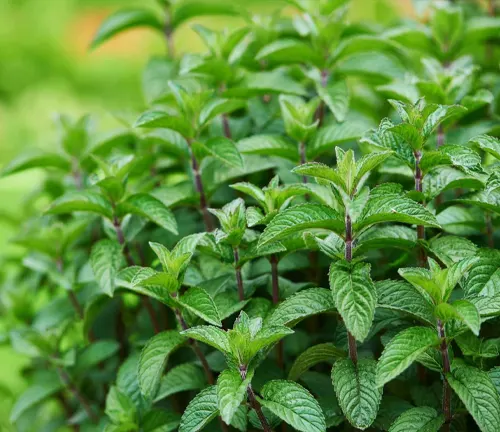
Woodland Elegance
Mint plants add a touch of woodland elegance to any garden. With their gracefully serrated leaves and delicate spikes of tubular flowers, they create a soothing and inviting atmosphere. Their colors can range from soft lavender to crisp white, depending on the mint species. Their presence not only attracts human admirers but also serves as a magnet for pollinators like bees and butterflies, contributing to the vitality of the local ecosystem.
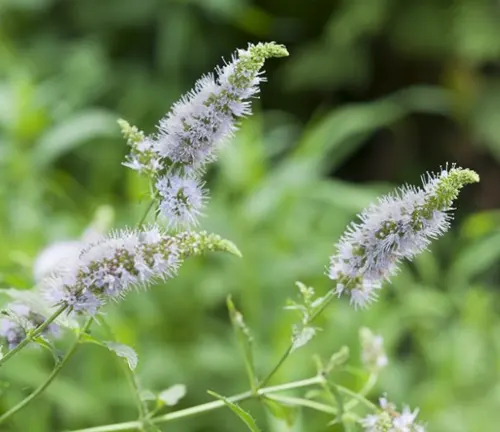
Ecological Importance
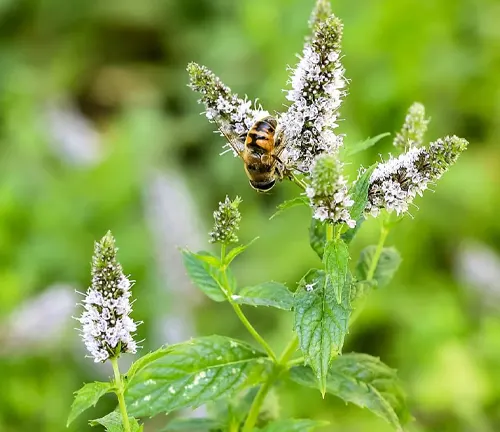
Beyond their visual appeal, mint plants hold ecological importance. They play a role in supporting various pollinators, thereby assisting in the pollination of neighboring plants. This, in turn, aids in biodiversity conservation. Additionally, some mint species are native to wetland habitats, where they help with water purification, making them crucial in maintaining the health of these ecosystems.
Cultivation and Conservation
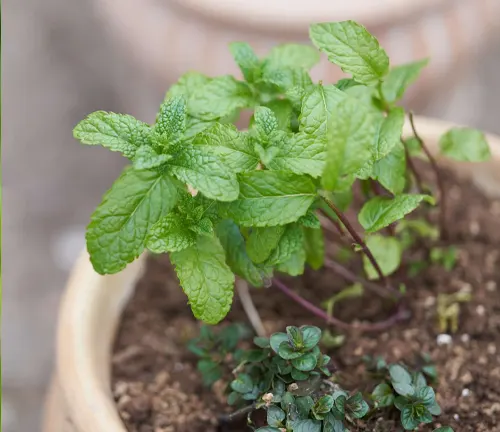
While mint plants are adored for their beauty and utility, their vigor can sometimes lead to overgrowth. It’s essential for gardeners to cultivate mint with care and consider its conservation. By planting mint in containers or designated areas, it can be kept in check, preventing it from overtaking other garden inhabitants. This conscious cultivation ensures that this botanical treasure remains a joy for generations to come.
Fragrance
Mint plants are celebrated not just for their appearance but also for their enchanting fragrance. Their leaves contain essential oils that release a refreshing, invigorating scent when crushed. Whether in the garden or as potted houseplants, mint offers a natural air freshener, making it a popular choice for aromatic herbs and teas.
Soil Stabilization
Mint plants contribute to soil stabilization with their dense, fibrous root systems. Their ability to anchor soil helps prevent erosion and land degradation. This quality, along with their suitability for rain gardens and riparian areas, underscores their ecological significance.

Common Uses
Mint’s versatility extends to its numerous practical applications. In the culinary world, mint leaves add a burst of flavor to dishes, cocktails, and desserts, earning their place in kitchens worldwide. Medicinally, they offer relief from digestive discomfort, headaches, and even as a breath freshener. Mint’s enduring popularity has also led to its presence in personal care products and perfumes.
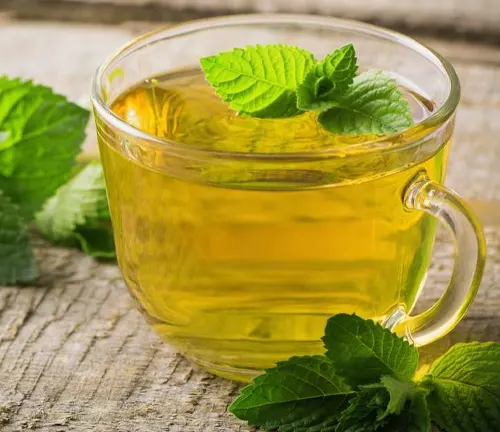
Benefits
The mint plant’s benefits are multifaceted. Its culinary and medicinal uses are well-documented, providing both flavor and relief for common ailments. Moreover, it has the power to deter pests, serving as a natural pesticide in gardens. Its environmental contributions, such as supporting pollinators and stabilizing soil, emphasize its ecological significance. In gardens and homes alike, mint’s fragrance and aesthetic charm make it a beloved botanical companion.
Different Species
Peppermint
(Mentha x piperita)
Peppermint is one of the most well-known mint species, prized for its strong and refreshing flavor. It’s often used in culinary applications, teas, and medicinal remedies. Peppermint has dark green leaves with a reddish stem and a cool, slightly sweet taste.
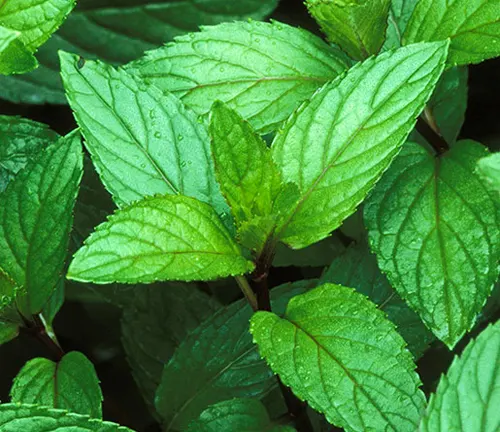
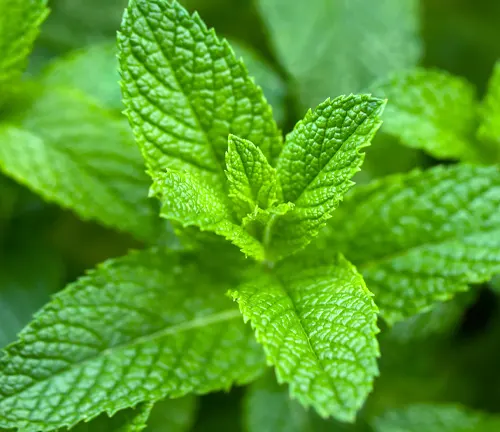
Spearmint
(Mentha spicata)
Spearmint is another widely recognized mint variety, known for its milder and sweeter flavor compared to peppermint. It’s a common choice for mint teas, garnishes, and desserts. Spearmint has bright green leaves and a less intense aroma.
Chocolate Mint
(Mentha x piperita ‘Chocolate’)
Chocolate mint is a delightful variation with leaves that have a hint of chocolate flavor and aroma. It’s often used in desserts, hot chocolate, and cocktails.
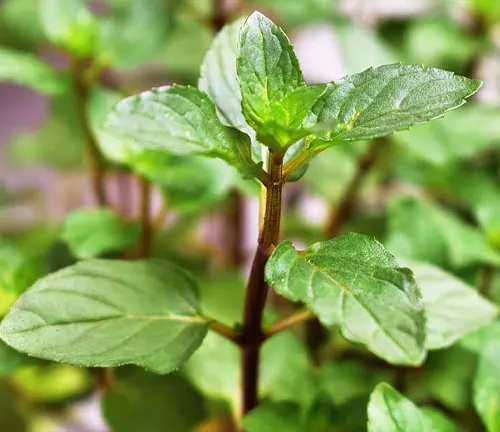

Apple Mint
(Mentha suaveolens)
Apple mint, also known as pineapple mint, has a pleasant apple-like fragrance and flavor. It’s commonly used in fruit salads, beverages, and garnishes.
Orange Mint
(Mentha x piperita ‘Citrus’)
Orange mint offers a citrusy twist with a mild orange flavor and aroma. It’s used in culinary applications and for making flavored water.
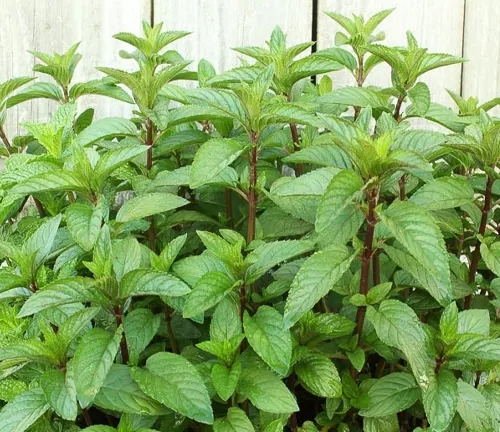
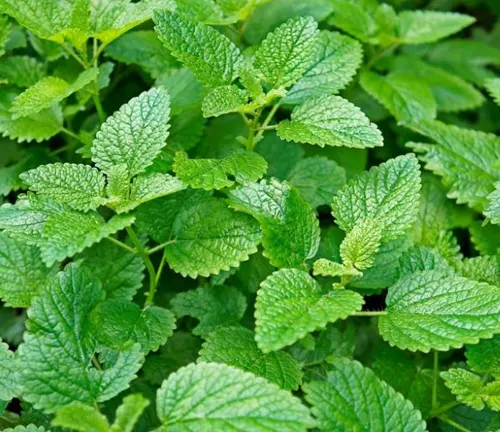
Lemon Balm
(Melissa officinalis)
While not a true mint, lemon balm is closely related. It has a distinct lemony flavor and aroma, making it a popular choice for herbal teas, desserts, and as a fragrant herb in gardens.
Corsican Mint
(Mentha requienii)
Corsican mint is a low-growing species with a strong peppermint scent. It’s often used as a ground cover and in rock gardens due to its compact size.
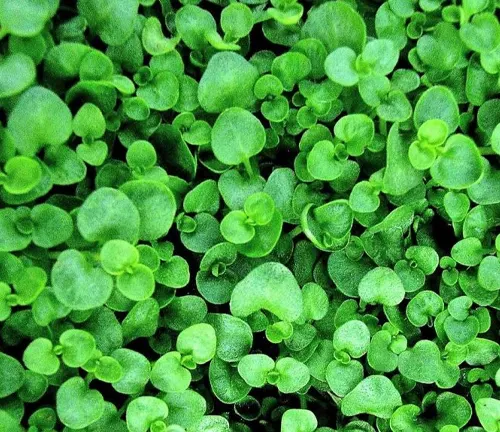
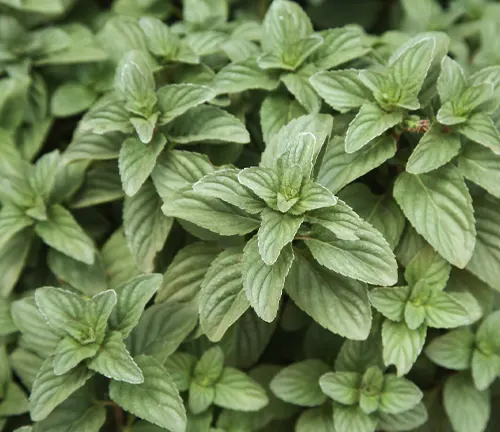
Bergamot Mint
(Mentha citrata)
Bergamot mint has a citrusy, bergamot-like fragrance and is used for making tea and potpourri. It’s also known as eau-de-cologne mint.
Pennyroyal
(Mentha pulegium)
Pennyroyal is a mint species known for its strong, pungent aroma. It’s used in herbal remedies but should be used with caution due to its potency.
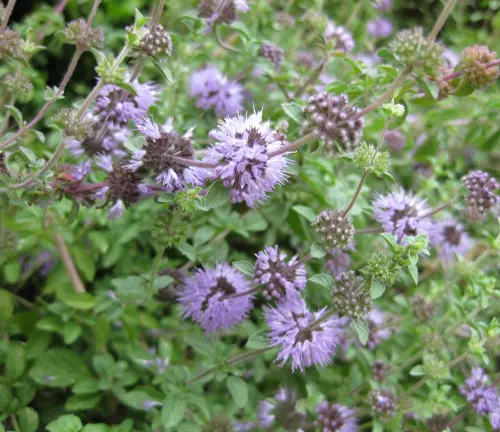
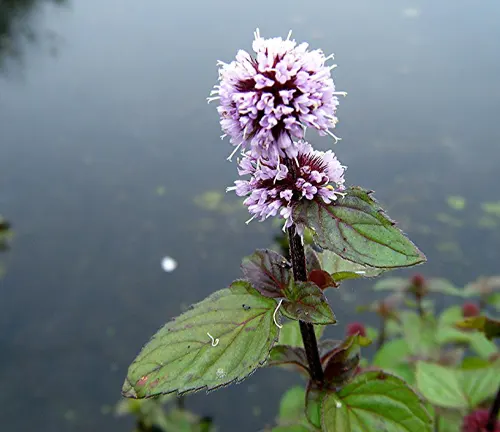
Water Mint
(Mentha aquatica)
As the name suggests, water mint is often found in wetland habitats. It has a spearmint-like flavor and is used in teas and for its ecological contributions.
Frequently Asked Questions (FAQs)
- How do I grow mint indoors?
Mint can be grown indoors in a pot or container with well-draining soil and adequate sunlight. Ensure it receives at least 4-6 hours of sunlight each day. - How often should I water my mint plant?
Mint plants prefer consistently moist soil but not waterlogged. Water when the top inch of soil feels dry. The frequency of watering may vary depending on factors like climate and pot size. - Can I grow different mint varieties together in the same pot?
It’s best to avoid planting different mint varieties in the same pot, as they can easily cross-pollinate and lose their distinct flavors. Use separate containers for each type. - How do I prune my mint plant?
Regularly prune mint to encourage bushy growth and prevent it from becoming too leggy. Pinch off the tips of the stems, and trim back any wilted or dead leaves. - What is the best time to harvest mint leaves?
Mint leaves can be harvested throughout the growing season. It’s best to pick them in the morning when the essential oils are most concentrated. Be sure not to remove more than a third of the plant at once to allow for regrowth. - How can I control mint from spreading too much in my garden?
Mint is known for its vigorous growth and can become invasive. To control its spread, consider planting it in a container or using barriers like buried plastic or metal sheets to limit its roots’ expansion. - Can I grow mint from seeds, or is it better to use cuttings?
While you can grow mint from seeds, it’s more reliable and faster to propagate it from cuttings or by dividing the root ball of an established plant. - What are the common pests and diseases that affect mint plants?
Mint plants can be susceptible to aphids, spider mites, and whiteflies. They may also develop diseases like powdery mildew or rust. Regularly inspect your plants and take appropriate measures to control these issues. - What are the culinary uses of mint leaves?
Mint leaves are used to flavor a wide range of dishes, including salads, sauces, beverages (such as mojitos and mint tea), desserts, and meat dishes. They provide a refreshing and aromatic touch to many recipes. - What are the medicinal benefits of mint leaves?
Mint leaves are known for their digestive properties and can help relieve indigestion, bloating, and nausea. They also have a soothing effect on headaches and can freshen breath. - Can I use mint as a natural pest repellent in my garden?
Yes, mint’s strong aroma can deter common garden pests like ants, rodents, and aphids. Planting mint near vulnerable plants can help protect them.



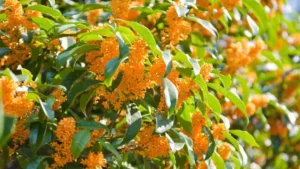
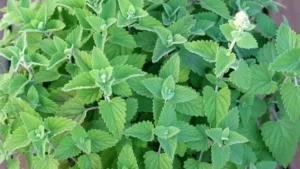
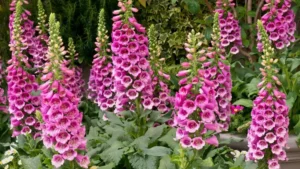

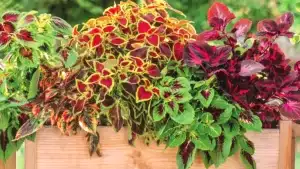

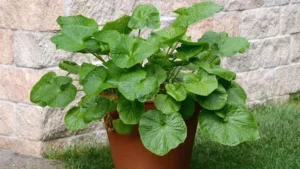
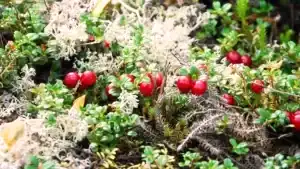
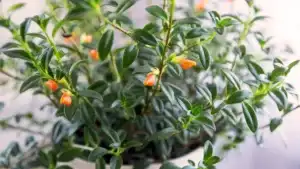

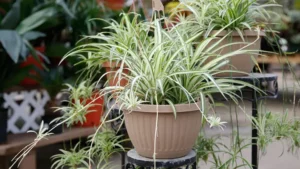
Leave your comment